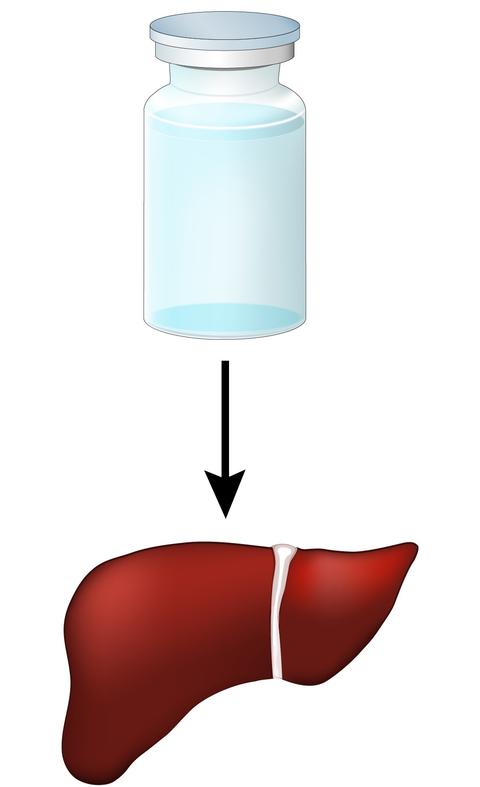Semaglutide improves metabolic dysfunction-associated steatohepatitis (MASH)
Sanyal AJ et al, N Engl J Med. 2025;392(21):2089-2099
In a phase 3 trial, semaglutide led to the resolution of MASH significantly more often than placebo and was also associated with improvements in fibrosis and relevant weight loss. Side effects were mainly gastrointestinal and overall not treatment-limiting. Thus, semaglutide emerges as another potential disease-modifying therapy – although long-term data on clinical outcomes are still lacking.
Background: Semaglutide, a glucagon-like peptide-1 receptor agonist, is a candidate for the treatment of metabolic dysfunction-associated steatohepatitis (MASH).
Methods: In this ongoing phase 3, multicenter, randomized, double-blind, placebo-controlled trial, the authors assigned 1197 patients with biopsy-defined MASH and fibrosis stage 2 or 3 in a 2:1 ratio to receive once-weekly subcutaneous semaglutide at a dose of 2.4 mg or placebo for 240 weeks. The results of a planned interim analysis conducted at week 72 involving the first 800 patients are reported here (part 1). The primary end points for part 1 were the resolution of steatohepatitis without worsening of liver fibrosis and reduction in liver fibrosis without worsening of steatohepatitis.

Results: Resolution of steatohepatitis without worsening of fibrosis occurred in 62.9% of the 534 patients in the semaglutide group and in 34.3% of the 266 patients in the placebo group (estimated difference, 28.7 percentage points; 95% confidence interval [CI]: 21.1–36.2; p < 0.001). A reduction in liver fibrosis without worsening of steatohepatitis was reported in 36.8% of the patients in the semaglutide group and in 22.4% of those in the placebo group (estimated difference, 14.4 percentage points; 95% CI: 7.5–21.3; p < 0.001). Results for the three secondary outcomes that were included in the plan to adjust for multiple testing were as follows: combined resolution of steatohepatitis and reduction in liver fibrosis was reported in 32.7% of the patients in the semaglutide group and in 16.1% of those in the placebo group (estimated difference, 16.5 percentage points; 95% CI: 10.2–22.8; p < 0.001). The mean change in body weight was -10.5% with semaglutide and -2.0% with placebo (estimated difference, -8.5 percentage points; 95% CI: -9.6 to -7.4; p < 0.001). Mean changes in bodily pain scores did not differ significantly between the two groups. Gastrointestinal adverse events were more common in the semaglutide group.
Conclusions: In patients with MASH and moderate or advanced liver fibrosis, once-weekly semaglutide at a dose of 2.4 mg improved liver histologic results.